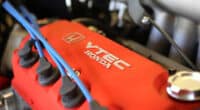When it comes to engine swaps, GM’s LS engine is typically the first to come up in conversation. These motors are popular for swapping due to a variety of reasons; affordability and aftermarket support being the top 2.
LS engines are easy to work on, they’re relatively fuel efficient, and they make great power when modified correctly.
In this article, we’ll take a deep dive into all things LS. We’ll discuss the different variants of the LS engine and take a closer look at some of the details that most beginners tend to glaze over when it comes to LS swaps.
What Is an LS Swap? Things to Consider
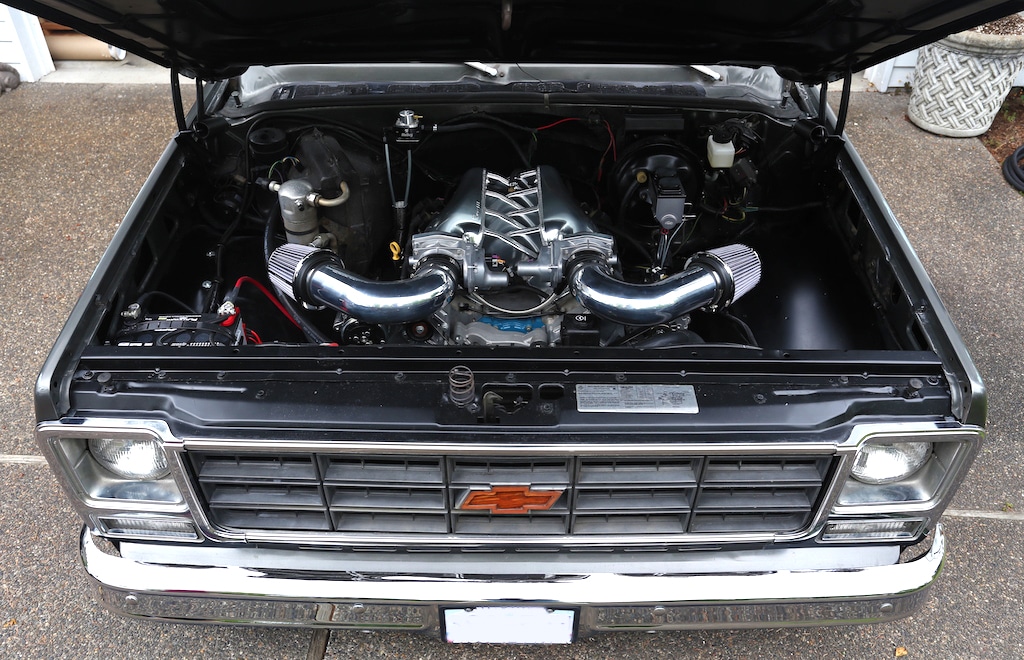
If you’re someone who’s not technically inclined, you’ve probably done plenty of reading on this topic already. A cursory search will reveal countless internet articles and forum threads about LS swaps.
Even though many of these contain valuable information, piecing it all together will likely require professional help because each application is different.
There are genuinely good car-specific aftermarket kits that will cut down on your build time, but you’re still going to require a decent understanding of how your engine works and what auxiliary equipment you’re going to need.
If it’s a GM-to-GM swap, most things will fit without trouble thanks to cross-compatibility. If that’s not the case, then expect to run into some issues.
For instance, something as small as your steering pump may not match, or you’ll have to spend time setting it up to fit and function properly. This is one of many things that could possibly go wrong.
It’s entirely possible to spend a ton of money building an engine and tranny combo, only to have it blown in a few days.
There are many accounts of people who have gone through multiple engines. So if you’re spending money, make sure you’re spending it right.
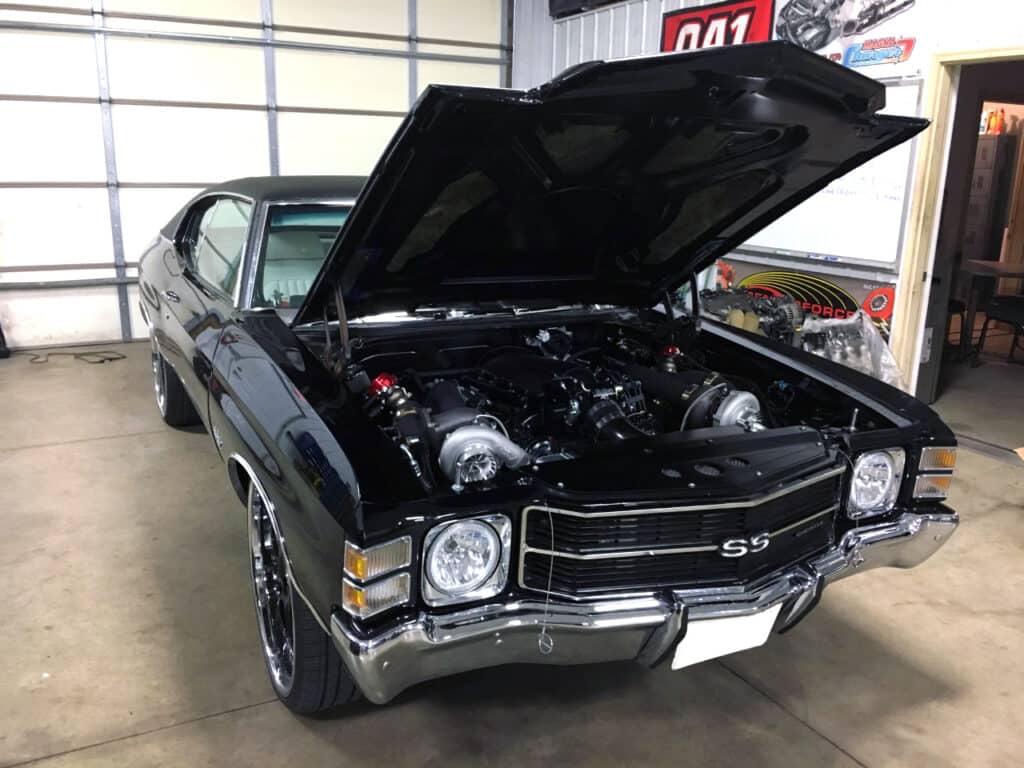
Engine builds can be extremely labor-intensive and require quite a bit of mechanical know-how.
If you’re new to this, we suggest getting it done with the help of a professional. Alternatively, if you like a good challenge or if you know what you’re doing and have a buddy who can help, you can do it yourself.
Either way, here’s a list of things you’ll need to get started on your LS conversion.
LS Swap Parts List
Starting with the obvious, you’re going to need an LS motor — we’ll discuss options later in this post. Some of the absolute basic requirements for the job include:
- Engine and transmission mounting brackets
- Intake system components and headers or exhaust manifold
- Oil pan
- Transmission components
- Cooling system components
- PCM (throttle and engine control)
- Fuel system
- Wiring
As you can probably tell, this only scratches the surface; it’s more of a bird’s eye view into what you’ll need. Continue reading for more details on the components mentioned above.
Engine Mounts
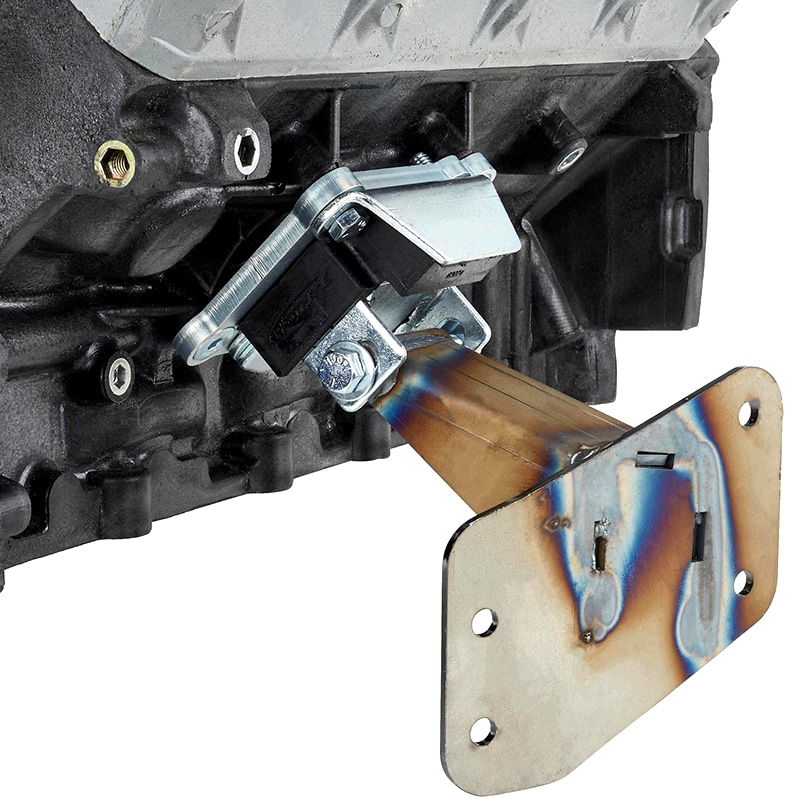
Mounting the engine largely depends on whether it’s a new or an old platform. LS engines share no mounting characteristics with older small-block Chevys. LS motors feature a new bolt pattern and will require adapter kits.
You can either source the parts on your own or resort to aftermarket options that range from adapter plates to complete conversion kits.
Of course, there are several companies that make custom kits for virtually any combination, be it a Mazda Miata or a Gen 1 F-Body Camaro.
Always read the fine print. Some kits may require aftermarket oil pans and custom cross members. Make sure to check them out before you go ahead.
Once you’ve decided on your choice of LS engine, you’ll need a transmission. The common question is whether to choose an automatic or manual.
Some people prefer the older GM TH350 and TH400 transmissions, but those require flexplate adaptors.
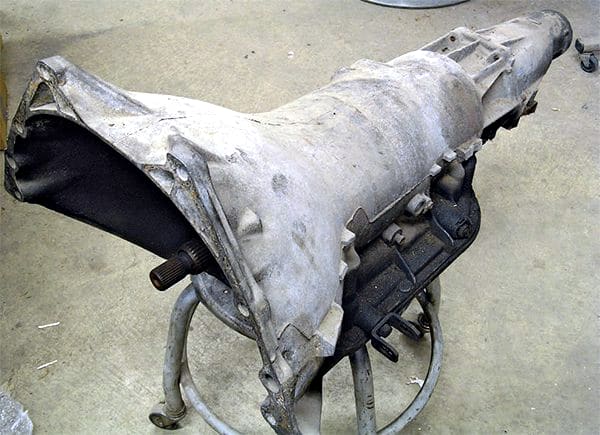
The general consensus among LS experts is to go for GM 4L60E, 4L80E, and 6L80E automatic transmissions. The former being the most suitable for the budget conscious.
In terms of manual transmissions, the Magnum T56 is considered among the best. This transmission will easily fit any LS engine with the right clutch and flywheel combo.
The driveshaft is another area of consideration when it comes to an LS swap. If you own a 4-speed unit, it’s worth noting that it’s going to be longer than the available 2 and 3-speed options. So you’re going to require a shorter driveshaft.
Buying a quality driveshaft won’t be that expensive, but if you’re planning a high-horsepower build, expect to spend a lot more.
Matching up your driveshaft with your transmission can be difficult if not done properly. Always make sure the engine and transmission fits, and check your motor mounts and cross members, so that the workflow is easier.
Intake and Headers

Once the engine and transmission are in place, you’re going to want to tackle the exhaust system next. More specifically, the headers.
You can always go for custom headers for your LS engine, or you can simply buy used OEM headers.
Generally, cast exhaust manifolds and shorty headers are the least expensive options. Whatever you choose, ensure you route it properly.
Fitment issues are pretty common. Of course, that depends on things like how cramped or roomy the engine bay is, chassis dimensions, and overall exhaust system layout.
As for the intake, again, you can go for aftermarket parts or simply install a universal air intake kit. Short ram and cold air intakes can also be considered.
Additionally, if you have a soft spot for old-school tech, there’s always the option of installing a carburetor.
There are several aftermarket options to choose from, but if you have concerns with hood clearance, this setup might not be for you.
Fuel System
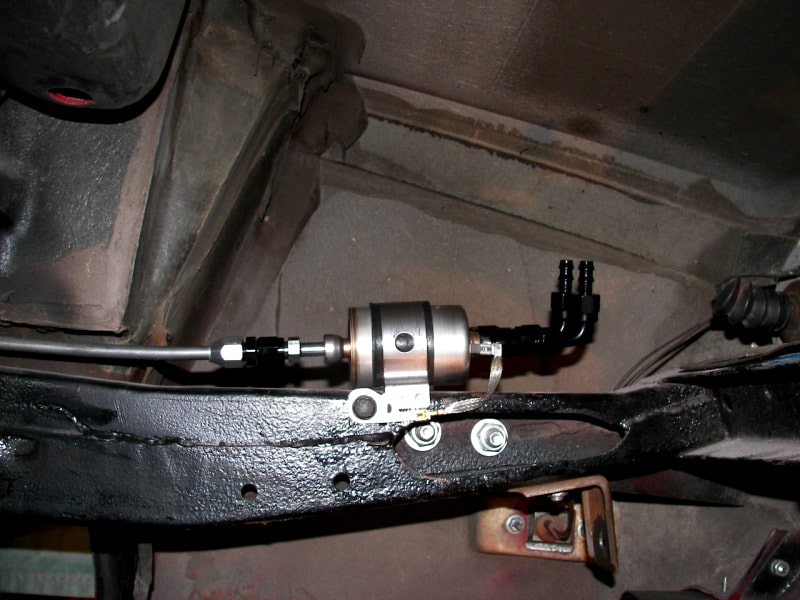
When it comes to fueling, the question of fuel injection (EFI) vs carburetor is always a topic of debate in the LS community.
Some prefer the efficiency of a fuel-injected system, while others, as mentioned earlier, like the mechanical honesty of a carburetor. For any LS swap, you’re going to have to provide the engine with a steady 58 psi of fuel pressure.
Most LS swaps occur in old cars, so the fuel systems are not necessarily ready for high-pressure fuel injection and therefore require new fuel systems.
So you’re looking at an EFI-ready fuel tank, a fuel pump, feed, return, vent, filter, fuel pressure regulator, and new lines and fittings.
You’ll also want to consider an inertia switch as a safety measure, shutting off fuel in case you get into an accident. As you can probably tell, this stuff ain’t cheap.
Oil Pan
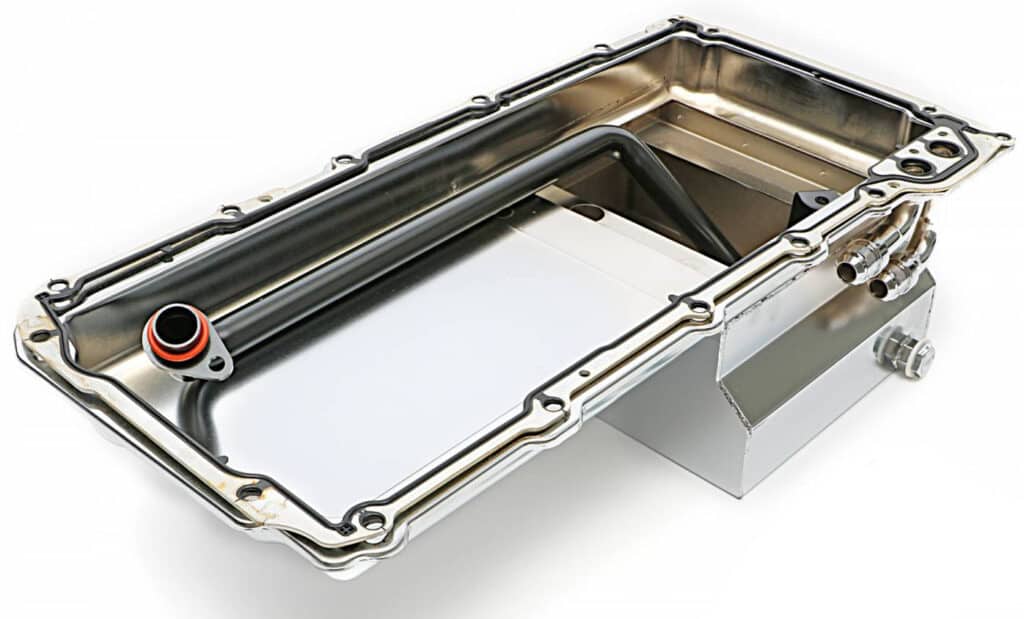
Each vehicle is different. You can’t expect the clearance of a Ford F-150 on a Chevy Camaro.
Likewise, your vehicle platform may force you to install a different oil pan versus the one you got with the engine, especially if it’s a junkyard find.
Oil pans, if not chosen properly, can hit one of the cross members or a steering linkage, so be sure to do the research and find one that fits your build. It’s up to you; whether to go the aftermarket route or choose OEM.
However, keep in mind that the aftermarket options come with increased oil capacity and better ground clearance than most OEM units.
Cooling System

Next up: cooling. You don’t want to overlook the cooling system on any engine build, let alone an LS. On most LS engines, the inlet and outlet ports of the water pump are both located on the passenger side.
Additionally, most LS-swap radiators feature a steam port, which connects to the steam lines that vent any trapped air back into the flowing coolant.
You can go ahead and buy an LS-specific radiator. Or, if you’re looking for a budget-friendly alternative, there are adaptors that fit a universal radiator.
However, the latter may not suit every application, especially for high-performance setups or custom chassis designs.
We recommend investing in a quality LS-specific cooling kit because, as they say, it’s better to be safe than sorry.
Throttle Setup, Control Modules, and Accessories
Gen IV engines and newer, along with some Gen III applications, are equipped with a drive-by-wire throttle, which is quite different from a traditional cable-operated system.
If you’re swapping a newer LS motor, you’ll have to get an electronic throttle pedal and wire that to the PCM. Throttle cables, on the other hand, are pretty straightforward, but they do make the engine bay look a bit messy.
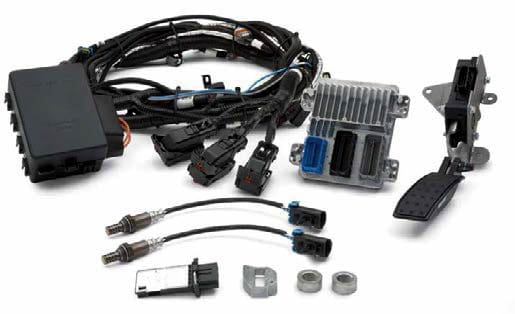
We recommend sticking with whatever your car came with in the first place, because it’s a tedious job to re-flash the ECU.
It’s better to opt for an aftermarket ECU and wiring kits that offer better peace of mind than a bunch of cables tied together haphazardly — the kind you get in most junkyard engines.
But before you do that, you’ll want to check for compatibility. More specifically, the reluctor wheel and cam sensor. The PCM for a 24-teeth wheel will not work properly on a crank sensor/engine with a 58-teeth wheel.
Also, if your transmission is electronically controlled, make sure your wiring harness has the inputs to use that without the PCM throwing a code.
Always follow the manufacturer’s recommendations while setting up the electricals; don’t cheap out on the connectors either. The last thing you want is an unexpected fire just because you decided to save a few bucks on wiring.
As for accessories, make sure the alternator and pumps fit with enough clearance between the cross members.

There are three different versions of front accessory drives from GM: The F-Body/GTO system, the Corvette and CTS-V system, and the truck, SUV, and SSR system. The first two are pretty much compatible with most conversions.
If it’s a custom build, you’ll likely have to mix and match the accessories depending on the platform so as to have enough clearance.
For instance, the accessories of an LQ9 truck engine will not fit properly on a small car chassis owing to their bulkier size.
Coming to the engine options, let’s look at the different LS motors and see which one you should consider for your build.
What Is the Best LS Engine Swap?
This is perhaps the most crucial part of the build and will determine the level of performance, customizations, and aftermarket add-ons you’ll require. The most common LS engines and their specifications include:
- LS1: 5.7L (305-350 hp, 225-365 lb-ft)
- LS6: 5.7L (385-405 hp, 385-400 lb-ft)
- LS2: 6.0L (390-395 hp, 400 lb-ft)
- LS3: 6.2L (426-436 hp, 420-428 lb-ft)
- LS4: 5.3L (303 hp, 323 lb-ft)
- LS7: 7.0L (505 hp, 470-481 lb-ft)
- LS9: 6.2L (638 hp, 604 lb-ft)
- LQ4: 6.0L (300-325 hp, 360-370 lb-ft)
- LQ9: 6.0L (345 hp, 380 lb-ft)
- LY6: 6.0L (352 hp, 382 lb-ft)
As you can tell, there are quite a few LS engines available both new and used.
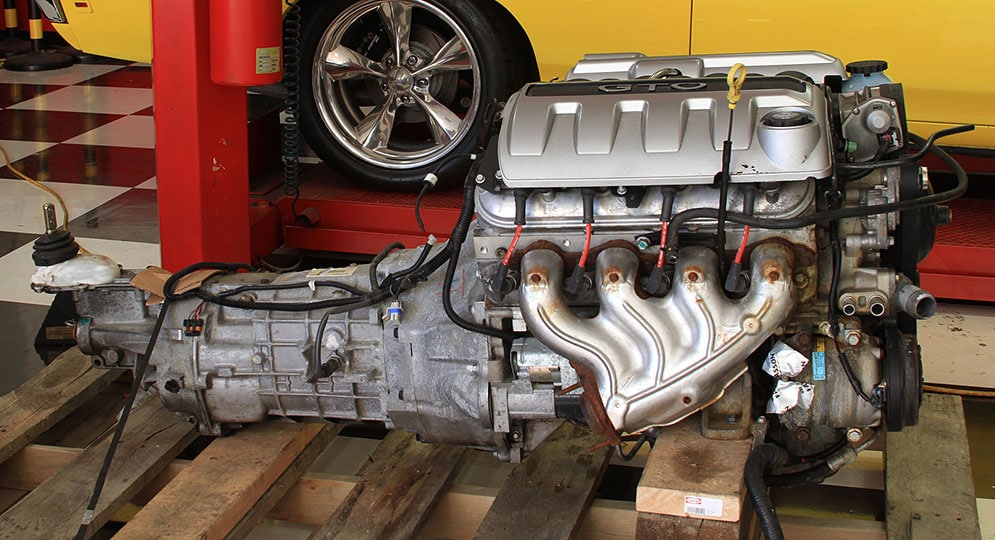
Most of them are car engines like the LS1 and LS3, while the LQ and LY engines are mostly truck motors featured in everything from a 1999 Chevy Express to a 2006 Cadillac Escalade.
You’ll find the LS1 motor in:
- 1997-2004 Corvette
- 1998-2002 Camaro
- 1998-2002 Pontiac Firebird, and
- 2004 Pontiac GTO
LS2 engines were featured in:
- 2005-2007 Corvette
- 2005-2006 Pontiac GTO, and
- 2006-2007 Cadillac CTS-V
LS3 engines can be found in:
- 2008-2013 Corvette
- 2010-2013 Corvette Grand Sport
- 2010-2015 Camaro, and
- 2014-2017 Chevy SS
The high-performance LS7 and LS9 motors were featured in the 2006-2013 Corvette Z06 and 2014-2015 Camaro Z/28, alongside the 2009-2013 Corvette ZR1.
Now, which LS should you consider swapping? But before that, ask yourself what your goals are with the engine swap, and how it fits into your overall budget.
If money is not a huge deal, LS3 is the way to go. LS2 is also worth considering if you’re tight on budget. You can find a lot of these in the used market. However, do your research before buying.
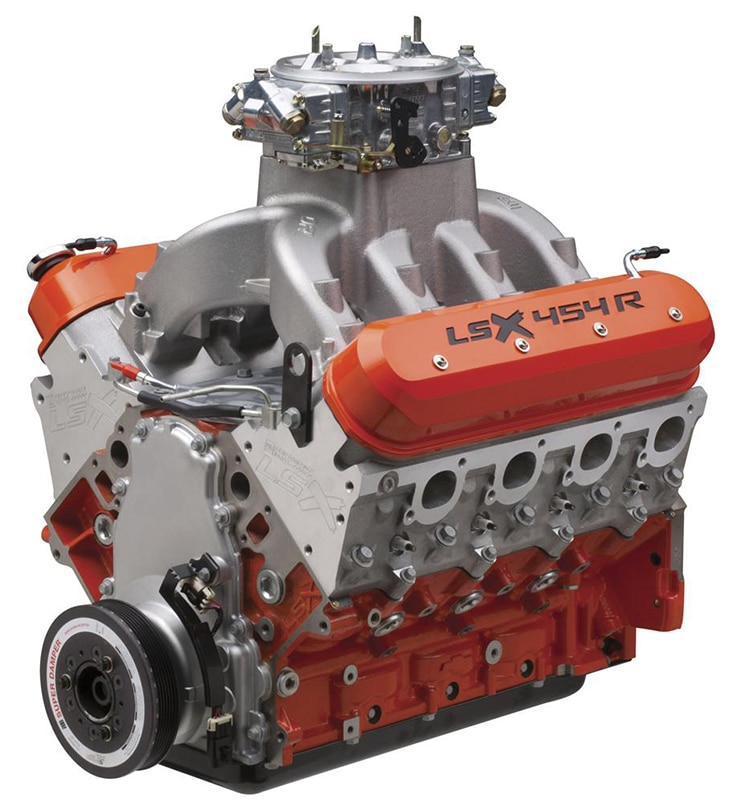
Bring an experienced mechanic with you when you’re shopping for used LS engines. If you come across a deal that’s too good to be true, it probably is.
Make sure the engine works. Preferably, buy it from a place that offers some kind of warranty.
On the other hand, if money is not a concern and you want to go all out, buy a crate engine and a new transmission. Better yet, go for the LSX race engine if you’re after pure performance.
LS1 vs LS3: Which One’s Better?
This is yet another hot topic among LS swap enthusiasts. Should you go LS1 or LS3? The primary difference between the two is the displacement.
The LS1 is 5.7L, while the LS3 comes in at 6.2L. Also worth considering is the fact that the LS3 is a newer engine — almost 12 years newer.

Additionally, the LS3 produces more power and torque than the relatively dated LS1.
Moreover, the LS3 is likely the more reliable engine in the short term simply because it’s the newer design. Age can be just as hard on an engine as mileage.
Next comes pricing and availability. The LS1 is significantly cheaper to source because it’s older. You can find one for around $3,000 to $5,000.
However, the LS3, being a newer engine, demands a higher price premium. Expect to pay between $5,000 to $8,000.
Even if you source one cheap, it’s likely that the LS3 will cost between $1,000 to $2,000 more than an LS1 engine.
Cost of LS Swap
Normally, the cost of LS swapping hovers around the $5,000 to $10,000 ballpark, depending on the nature of the build.
If you’re looking for a really basic stock LS swap and can find most of the parts used and do all the work yourself, you can get it done for around $4,500 to $6,000.
There are, however, people who have done LS swaps for less than $3,000, but they’ve reused a lot of parts and done most of the work themselves.
If you’re consulting a professional tuning shop, labor costs alone will go north of $15,000.
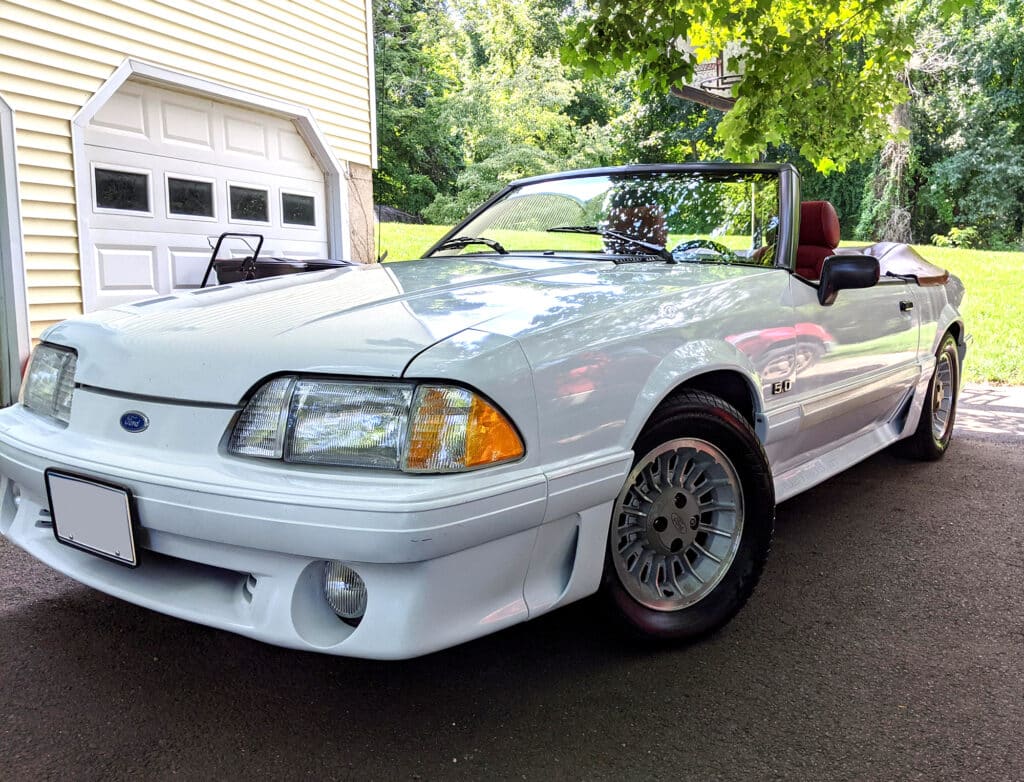
It all comes down to your budget. To make things a bit easier on the wallet, we recommend performing swaps on cars that are more common. Preferably any GM vehicle.
Parts and LS conversion kits are readily available. Not that it’s impossible on other brands, but it’s relatively easy on a GM.
However, before you jump in on your LS project, make sure you have planned and budgeted enough. Don’t forget to account for unpredictable expenses.
Also, if you’re going the DIY route, don’t bother rushing it. Take your time; wait for deals to pop up.
LS Swap Guide: Concluding Thoughts
Engine swapping, regardless of whether it’s an LS or not, is a tedious and time-consuming process. Unlike what you read on the internet, it’s not a weekend job.
Ask anyone who’s experienced in engine swaps and they’ll tell you how at times they get stuck waiting for parts and sometimes even run out of money.
Downtime is typically quite long, so plan your build, especially if you’re on a tight budget.
What’s your favorite LS engine? Let us know by dropping a comment below.
If this article has helped you, consider sharing it with your friends on Facebook and Reddit. We appreciate your support!

